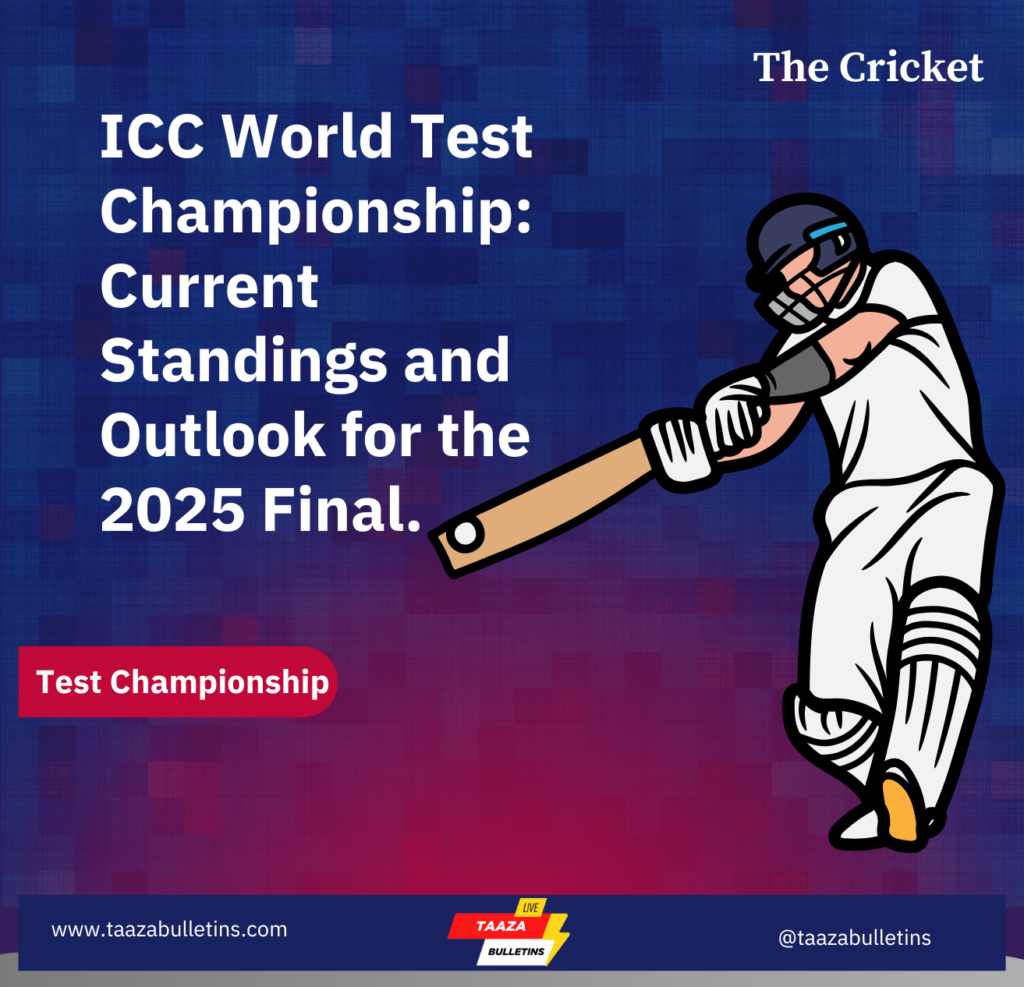Cricket Reimagined: ICC’s Bold New Rules for a Thrilling Future
Table of Contents
Picture this: a Test match where every second counts, where umpires wield sharper tools to keep the game fair, and where strategic decisions can flip the script in an instant. That’s the vision the International Cricket Council (ICC) is bringing to life with its latest rule changes for the 2025-2027 World Test Championship, which kicked off with the gripping Sri Lanka vs. Bangladesh Test in Galle. These updates tackle everything from sluggish over rates to sneaky tactics, ensuring cricket stays fast, fair, and full of surprises. Let’s break down these game-changing rules and explore how they’re set to redefine the sport we love.
Stop Clock: Racing Against Time in Test Cricket
Test cricket’s charm lies in its unhurried rhythm, but slow over rates have long tested fans’ patience. Enter the stop clock, a rule borrowed from limited-overs cricket to keep Test matches moving. The fielding team now has just 60 seconds to start the next over after the previous one ends. A digital clock at the ground ticks up from zero, adding a layer of urgency to the field. Dawdle too long, and the consequences are steep: two warnings, then a five-run penalty for the batting side on the third slip-up. To keep things balanced, warnings reset every 80 overs, aligning with the new ball. This rule, already in play for the 2025-2027 cycle, promises to make Test cricket crisper without sacrificing its strategic heart.
Saliva Ban Eased: Smarter Ball Management
Shining the ball is an art, but the saliva ban introduced during the pandemic changed the game. The ICC has now fine-tuned this rule to focus on fairness. Umpires no longer have to swap out a ball just because saliva is detected—only if its condition is significantly altered, like being overly wet or shiny. If a team tries to game the system by applying saliva to force a ball change, they risk a five-run penalty for the batting side, but the game continues unless the ball’s state demands a replacement. This shift puts the onus on umpires to judge intent and impact, curbing tactical trickery while keeping the game’s flow intact.
DRS Revamped: Precision in Every Decision
The Decision Review System (DRS) is getting a major upgrade to make umpiring calls sharper and more consistent. When both a player and an on-field umpire request a review, the TV umpire now processes them in the order they happened, mirroring the on-field action. For secondary dismissals—like when a caught-behind call is overturned but the ball hit the pads—the default for the next mode (say, LBW) stays “out.” If ball-tracking shows “umpire’s call,” the batter remains out, aligning with the original decision. This tweak cuts down on confusion and keeps reviews fair.
Another change involves catches off no-balls. Previously, a no-ball meant the catch’s fairness wasn’t checked. Now, the TV umpire will verify if the catch was clean. A fair catch earns the batting side one run for the no-ball; an unclean catch grants the completed runs plus the no-ball run. These updates ensure every detail of a dismissal is scrutinized, making the game more transparent and equitable.
Short Runs Cracked Down: Fielders Gain the Upper Hand
Batters pulling a fast one by deliberately not grounding their bat during a run—known as a “deliberate short run”—are now in the ICC’s crosshairs. If caught, the umpire at the bowler’s end steps in with a firm response: all runs are voided, the not-out batter returns to their original end, and the batting side cops a five-run penalty. Here’s where it gets interesting—the fielding captain can choose which batter faces the next ball, giving them a tactical edge to target the weaker player. If a batter aborts a run without trying to deceive (like avoiding a collision), the umpire can let it pass. This rule adds a thrilling strategic layer, making every run a high-stakes decision.
Why These Changes Matter
These aren’t just rule tweaks—they’re a bold step toward a more dynamic and fair cricket experience. The stop clock keeps Test matches lively, respecting fans’ time while preserving the format’s intensity. The updated saliva rule stops teams from bending the system, letting umpires focus on the ball’s actual state. Enhanced DRS rules ensure decisions are clear and consistent, reducing those heated debates that can steal the spotlight. And the short-run rule hands fielding teams a powerful tool, turning a sneaky tactic into a strategic opportunity.
As the 2025-2027 World Test Championship unfolds, these changes will shape every match, from nail-biting finishes to tactical battles. They reflect the ICC’s drive to evolve cricket while honoring its traditions, ensuring the game remains a captivating clash of skill, strategy, and fairness for players and fans alike.
Disclaimer: The information in this blog is based on publicly available updates from the International Cricket Council and cricket news sources.


